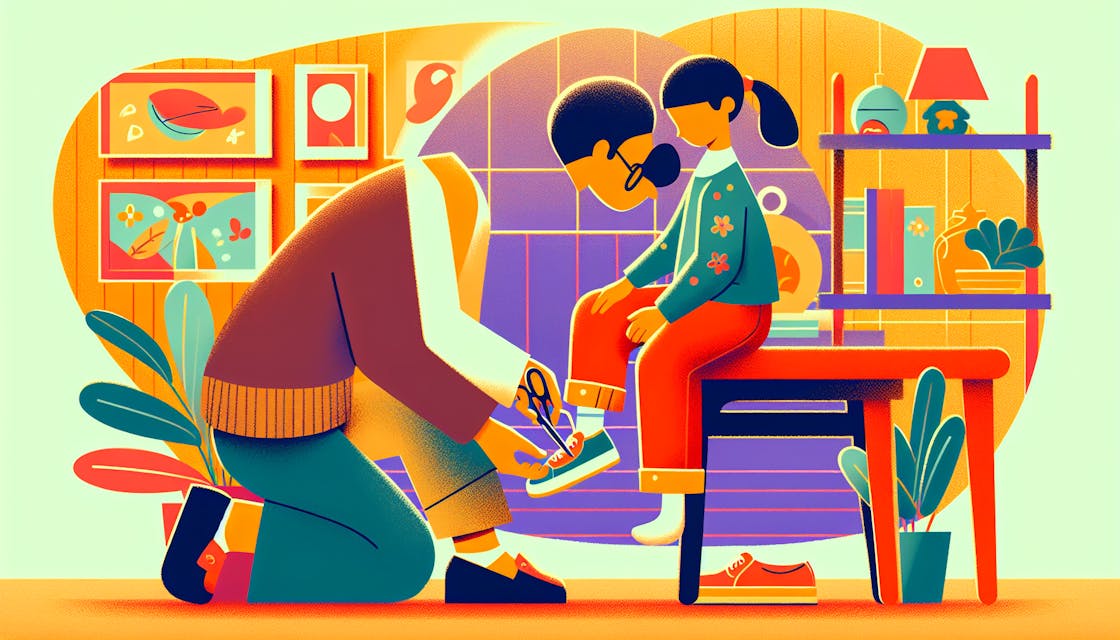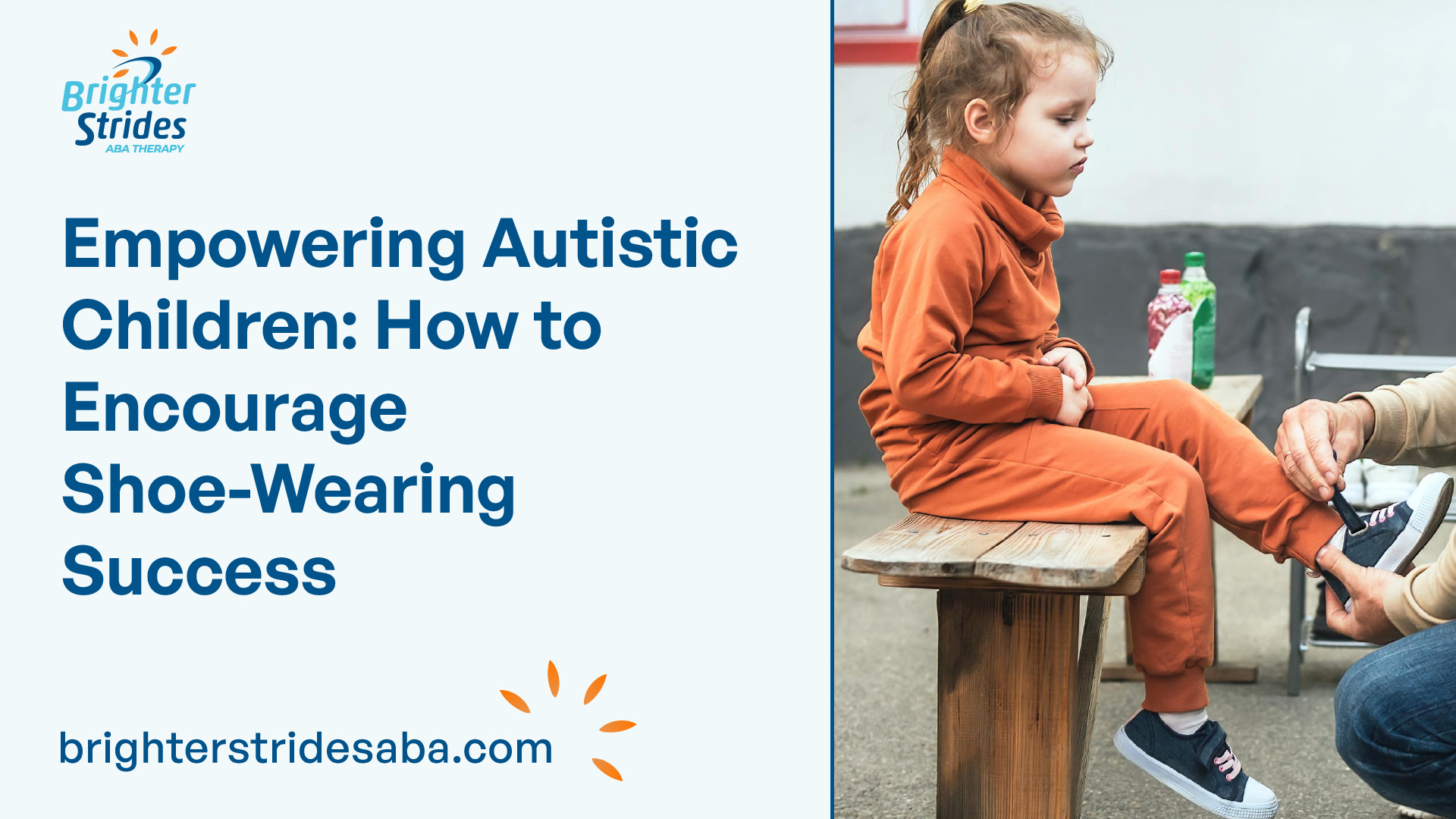
Understanding the Challenges
When it comes to getting an autistic child to keep their shoes on, it’s important to understand the unique challenges they may face. Sensory sensitivities and the impact on behavior and comfort play a significant role in this aspect.
Sensory Sensitivities and Shoe Wearing
Autistic children often have sensory processing differences, which can affect their perception and response to sensory stimuli. Sensory sensitivities are common in children with autism, and some may find wearing shoes uncomfortable or even painful, leading them to take their shoes off. The sensation of tightness, pressure, or certain textures on their feet can be overwhelming for them, making it challenging to keep their shoes on.
To address sensory sensitivities, parents and caregivers can help by trying different types of shoes that fit well and are comfortable for the child. Understanding the sensory preferences and aversions of the child is key in selecting shoes that are non-irritating and meet their comfort needs.
Impact on Behavior and Comfort
The discomfort caused by sensory sensitivities can lead to behavioral challenges in autistic children when it comes to shoe wearing. Some children may resist wearing certain shoes altogether, leading to frustration and potential meltdowns. The discomfort and pain they experience can negatively impact their mood and behavior, making it difficult for them to keep their shoes on.
It is essential to create a supportive and understanding environment for the child. Patience, empathy, and gentle encouragement can go a long way in helping them feel more comfortable and willing to wear their shoes. By addressing their unique needs and providing appropriate strategies, parents and caregivers can help autistic children overcome the challenges associated with shoe wearing.
Understanding the sensory sensitivities and the impact on behavior and comfort is the first step in finding effective solutions to encourage autistic children to keep their shoes on. By taking a personalized approach and considering the individual needs of the child, parents and caregivers can provide the necessary support and make shoe wearing a more comfortable and enjoyable experience for them.

Strategies for Encouraging Shoe Wearing
Encouraging an autistic child to keep their shoes on can be a challenge due to sensory sensitivities and individual preferences. However, there are several strategies that can help promote shoe-wearing behaviors. It’s important to remember that each child is unique, so it may be necessary to try different approaches to find what works best for them. Here are some strategies that can be effective:
Positive Reinforcement Techniques
Using positive reinforcement techniques can be a powerful tool in encouraging autistic children to keep their shoes on. Positive reinforcement involves rewarding the child with a preferred item or activity when they wear their shoes as desired. This can motivate the child and increase the likelihood of them repeating the behavior in the future. Rewards can vary depending on the child’s interests, such as a small toy, a favorite snack, or praise and recognition.
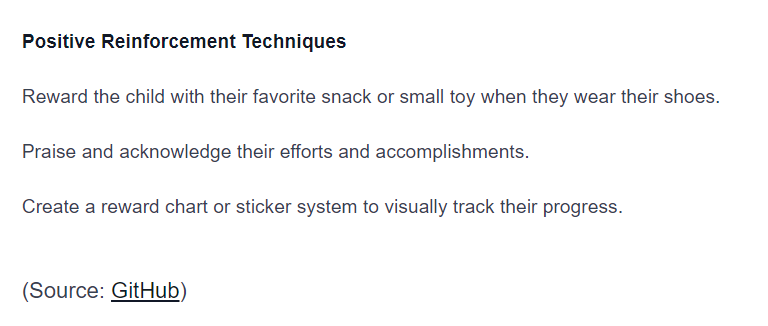
Gradual Exposure and Desensitization
For some autistic children, the sensation of wearing shoes may be uncomfortable or overwhelming. Gradual exposure and desensitization techniques can help them become more comfortable with the feeling of wearing shoes. Start by introducing short periods of time wearing shoes and gradually increase the duration as tolerated. This gradual approach can help reduce anxiety and resistance.
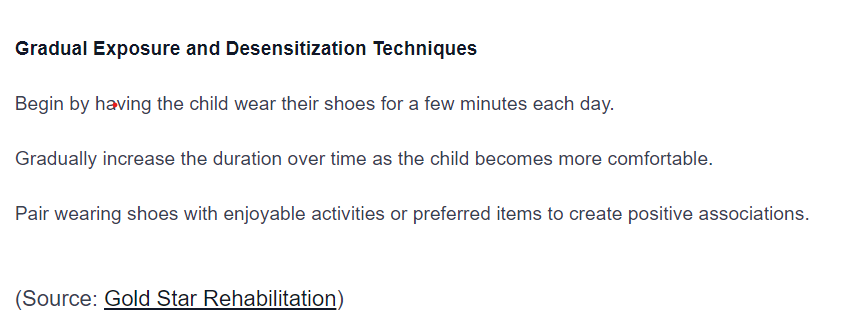
Visual Supports and Social Stories
Visual supports, such as visual schedules and social stories, can enhance an autistic child’s understanding of why wearing shoes is necessary and what to expect during the process. Visual supports provide a clear visual representation of expectations and routines, reducing anxiety and increasing motivation to cooperate.
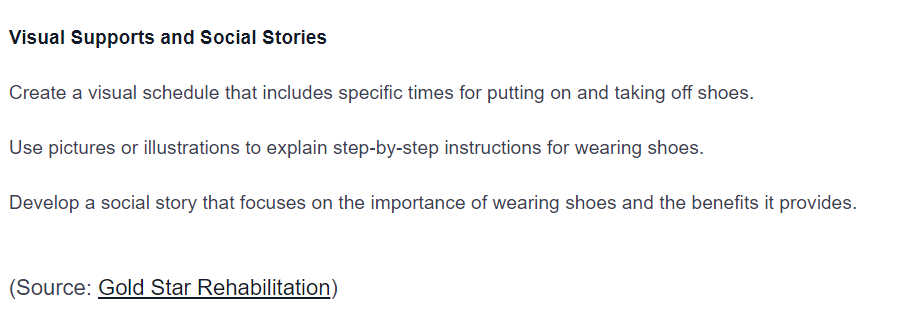
Establishing Routines and Using Visual Schedules
Autistic children often thrive on structure and routine. Establishing consistent routines and using visual schedules can greatly benefit them in various aspects of their daily lives, including shoe-wearing. Create a visual schedule that includes specific times for putting on and taking off shoes. This helps the child understand and anticipate the process, making it more predictable and manageable.

By implementing positive reinforcement techniques, gradual exposure and desensitization strategies, visual supports, and establishing routines, parents and caregivers can help autistic children develop the skills and confidence to keep their shoes on. It’s important to tailor these strategies to the individual needs and preferences of the child, seeking professional guidance if necessary, to ensure the best possible outcomes.
Choosing the Right Shoes
When it comes to helping an autistic child keep their shoes on, choosing the right shoes plays a crucial role. Considering comfort and fit, sensory-friendly options, and alternatives to laces and buckles can make a significant difference in promoting shoe-wearing success.
Comfort and Fit Considerations
Sensory sensitivities are common in children with autism, and some may find shoes uncomfortable or even painful, leading them to take their shoes off. To address this, parents can try different types of shoes that fit well and are comfortable for the child.
When selecting shoes, consider the following comfort and fit considerations:
- Opt for shoes with ample toe space to prevent pressure and discomfort.
- Look for shoes with cushioning or supportive insoles to provide additional comfort.
- Choose shoes made from breathable materials to prevent excessive sweating and discomfort.
- Ensure that the shoes are the correct size to avoid tightness or constriction.
By prioritizing comfort and fit, you can create a more positive shoe-wearing experience for your autistic child.
Sensory-Friendly Shoe Options
Sensory sensitivities can make the sensation of wearing shoes challenging for autistic children. To minimize sensory discomfort, consider sensory-friendly shoe options. These shoes are designed with sensory sensitivities in mind, providing features that enhance comfort and reduce sensory issues.
Some characteristics of sensory-friendly shoes include:
- Seamless design to avoid irritating seams or tags that may cause discomfort.
- Soft, flexible materials that conform to the shape of the foot.
- Adjustable closures to allow for a customized fit.
By opting for sensory-friendly shoes, you can help alleviate the sensory challenges associated with wearing shoes, making it easier for your child to keep them on.
Alternatives to Laces and Buckles
Autistic children may struggle with shoes that have laces and buckles, finding them unreasonably tight or difficult to manipulate. To address this issue, consider shoes with alternative fastening methods that are easier for them to manage.
Hook and loop fasteners, commonly known as Velcro, are an excellent alternative. These fasteners allow for easy on and off access and give your child more control over how tight or loose the shoes are fastened. This can help them feel more comfortable and more willing to keep their shoes on.
Choosing shoes with alternative fastening options can make the shoe-wearing experience more manageable and enjoyable for your autistic child.
By considering comfort and fit, exploring sensory-friendly shoe options, and opting for alternatives to laces and buckles, you can increase the chances of your autistic child keeping their shoes on. It’s important to be patient and understanding throughout the process, allowing your child to gradually adapt to wearing shoes and providing support along the way.
Additional Tips and Support
When it comes to helping autistic children keep their shoes on, there are several additional tips and support strategies that can be beneficial. These include addressing sensory sensitivities, seeking professional guidance, addressing fine motor skills, and managing routine changes.
Addressing Sensory Sensitivities
Sensory sensitivities are common in children with autism and can contribute to difficulties in wearing shoes comfortably. Some children may find certain textures, tightness, or pressure associated with shoes to be uncomfortable or even painful, leading them to take their shoes off. To address sensory sensitivities:
- Try different types of shoes that fit well and are comfortable for the child, considering their sensory preferences and aversions.
- Provide choices in selecting shoes, such as colors or styles, to empower the child and increase their willingness to put on and keep their shoes on [6].
Seeking Professional Guidance
Consulting with professionals, such as occupational therapists or behavior analysts, can provide valuable insights and personalized strategies to address the specific needs and challenges of the autistic child in keeping their shoes on. These professionals can consider the child’s sensory sensitivities, communication preferences, and individual behaviors to develop effective intervention plans.
Addressing Fine Motor Skills
Difficulties with fine motor skills can also impact a child’s ability to put on and keep their shoes on. To address these challenges:
- Provide opportunities for fine motor skill development through activities that involve manipulating small objects, such as puzzles or building blocks. Improved fine motor skills can help the child with tasks like tying shoelaces or fastening buckles [3].
- Consider alternative shoe options that do not require intricate fastenings, such as slip-on shoes or shoes with Velcro closures. These can be easier for the child to manage independently.
Managing Routine Changes
Autistic children often thrive on routine and can struggle with changes. When introducing or maintaining the routine of wearing shoes:
- Use visual supports, such as social stories or visual schedules, to explain the expectations and establish a structured routine around wearing shoes.
- Gradually introduce changes in routine by starting with short periods of wearing shoes and gradually increasing the duration as tolerated. This gradual desensitization technique can help the child become more accustomed to the feeling of wearing shoes.
By addressing sensory sensitivities, seeking professional guidance, addressing fine motor skills, and managing routine changes, parents and caregivers can provide the necessary support to help autistic children keep their shoes on comfortably and confidently. Every child is unique, so it may be helpful to try different strategies and adapt them to suit the individual needs of the child.
References
- https://www.goldenstepsaba.com/resources/get-child-with-autism-to-wear-shoes
- https://www.goldstarrehab.com/parent-resources/how-do-you-get-an-autistic-child-to-keep-their-shoes-on
- https://www.goldencaretherapy.com/how-do-you-get-an-autistic-child-to-keep-their-shoes-on/
- https://www.crossrivertherapy.com/autism/shoes
- https://www.goldenstepsaba.com/resources/get-child-with-autism-to-keep-their-shoes-on
- https://www.autismspeaks.org/sensory-issues

 We've just released an article!
Check out our blog!
We've just released an article!
Check out our blog!
